1. Function
1.1. support
1.1.1. supports the rope and provides it with a path over the towers
1.2. hold-down (or depression sheave assembly)
1.2.1. to hold down or depress the rope
1.2.1.1. keeps rope profile down to the ground and if manual lift evacuation is necessary, it will be less difficult and hazadous procedure
1.3. combination
1.3.1. e.g. a combination sheave assembly with 6 sheaves might have 4 sheaves that support ther rope and 2 that hold down the rope
1.3.2. can be located ya points on the line where a load on the tower can vary
2. sheave assembly (=sheave frame)
2.1. a set of sheaves in a frame
2.2. bear the weight of carriers, ropes, tensioning system
2.3. also known as: sheave trains, sheave batteries, sheave frames and balanciers
2.4. distribute the load evenly among all sheaves
2.5. Types of sheave assembly (2)
2.5.1. straddle plate design (OR nesting)
2.5.1.1. more common today
2.5.2. cantilever design
3. Main Parts of Sheave Assembly (5)
3.1. main sheave assembly frame
3.1.1. frame=beam that holds axles on which the secondary sheave frames are mounted.
3.1.2. it is mounted on the main sheave assembly axle which attached to tower crossarm.
3.1.3. also known as Enever frame
3.2. secondary sheave frames
3.2.1. frame=beam support the sheaves
3.2.2. mounted on axles that attach to the main sheave beam
3.2.3. allow the secondary frame elements to pivot and distribute the load to between sheaves
3.2.4. also known evener frames or walking beams
3.3. bushings
3.3.1. a bushing reduces sliding friction
3.3.2. sheave beams(frames) pivot on their exles as they react to and distribute the loads on the assembly.
3.3.3. nylon, brass, fibre
3.3.4. needs lubrication
3.4. axles and shafts
3.4.1. primary/secondary pivot shafts
3.5. mounting farme
4. Tower->mounting frame->the main sheave frame->the secondary sheave frame->sheaves
5. Heavy and Light sides
5.1. loaded or heavy side - carries the passangers
5.1.1. more sheaves on this side than on light one
5.2. ligth or unloaded side
5.3. downloading capability
5.3.1. the ability to transport passengers both downhill and uphill (the equal number of sheaves on both side of the line)
6. Deropement guards, Cable Catchers and Carrier guards
6.1. S.A. are equipped with inside deropement guards
6.1.1. prevent rope from leaving the sheaves to the inside
6.2. hanger arms
6.3. rope-catching shoe/rope catcher
6.3.1. prevent deropement to the outside
6.4. carrier guides
6.4.1. are required where carriers swinging inwards can contact lift towers
7. safety circuit should sense a deropement ->stop the drive motor->activate brakes->?
8. Towers
8.1. Support towers
8.2. hold-down towers relating to the type of sheave assembly they hold
8.3. Design and Construction
8.3.1. Portal tower OR shape of inverted U (gate)
8.3.1.1. the rope passes thru the portal tower construction
8.3.2. a Mast or Pylon tower (single support member)
8.3.2.1. the rope runs on either side of the tower column (tubular, колонна)
8.3.3. lattice tower (решетка, как линии электропередач)
8.3.3.1. used for larger installations, like gondolas and tramways
8.4. Tower Heads and Lifting Frames
8.4.1. Tower heads OR Yokes
8.4.1.1. horizontal frames(beams) on the top of the tower column. S.A. attach to them.
8.4.1.2. crossarms
8.4.1.3. also hold lifting frames (allows to do dif. maintenance works)
8.5. made of steel, past - wood
8.6. Work Platforms and Ladders
8.6.1. where staff can conduct maintenance , attached to the tower head
8.6.2. ladders provide access to towers
8.7. Tower Foundation/footings
8.7.1. anchor the tower
8.7.2. is subject to pressure from wind and snowcreep
8.7.3. made of concrete that was put in the hole and hardened
8.8. Tower Installation
8.8.1. poured-in-place method
8.8.1.1. a hole is excaveting in the ground and filled with concrete
8.8.2. the formed foundation method
9. =line equipment
9.1. provide the path for the haul rope
9.2. also called as Line Sheaves
10. Sheaves(Line sheaves) are composed of
10.1. sheave liners OR sheave tires
10.1.1. made of rubber/neoprene
10.1.2. If rope twists -> deropement, damage to rope
10.2. hubs and flanges
10.2.1. wheel hub
10.2.2. sheave flanges attached to the hub
10.3. Lead-In and Lead-Out Sheaves
10.3.1. the haul rope contacts it fist as it moves over a sheave train - lead-in
10.3.2. the last sheave in the assembly - lead-out or trailing
10.4. bearings
10.4.1. mounted inside the hubs
10.4.2. reduce friction
10.4.3. Roller and ball bearings to reduce rolling friction
10.4.3.1. ball bearings - small lifts
10.4.3.2. rollers - high speed lifts
10.4.4. some require periodic (smazyvanie)greasing; sealed bearing do not.
